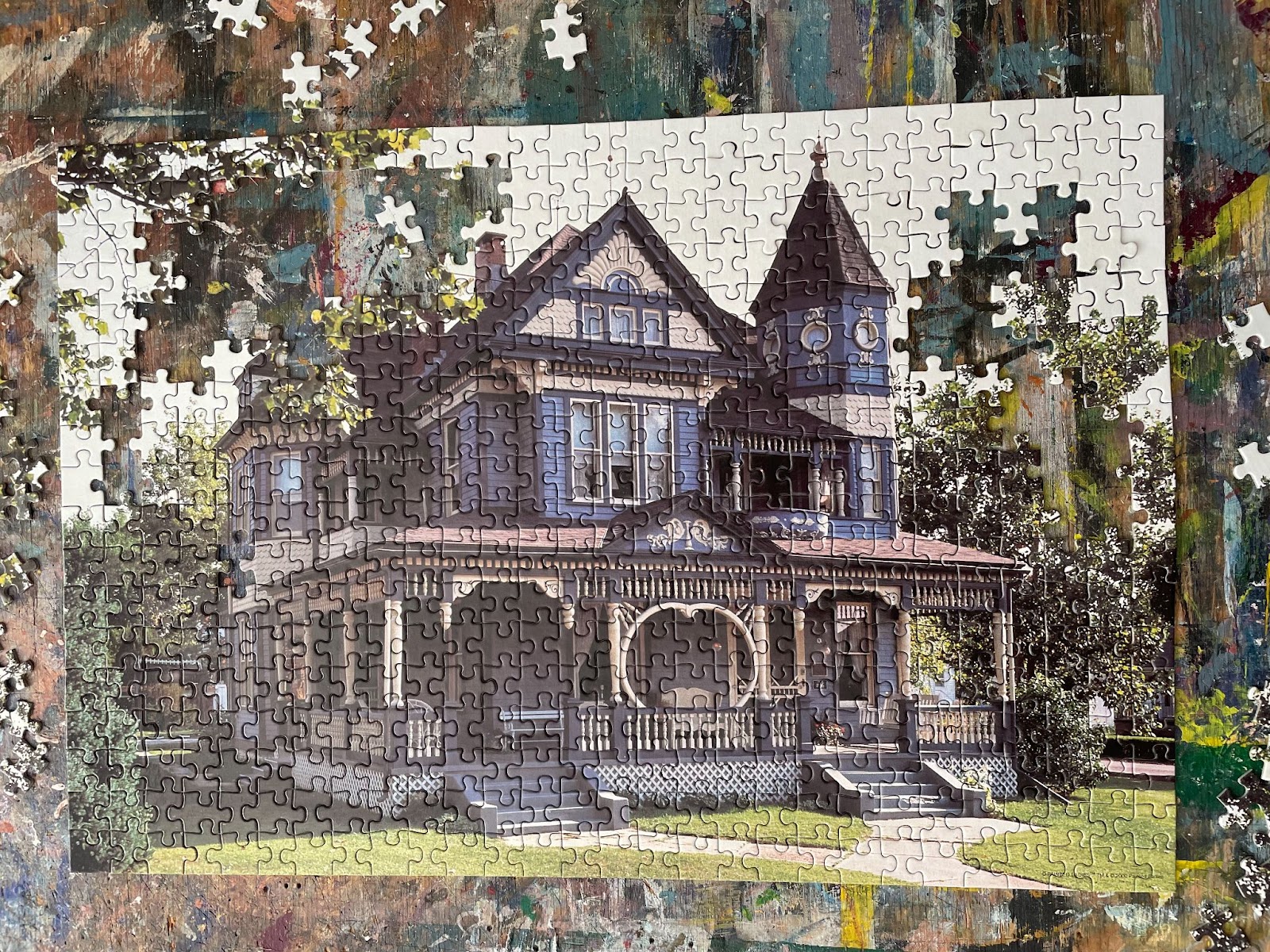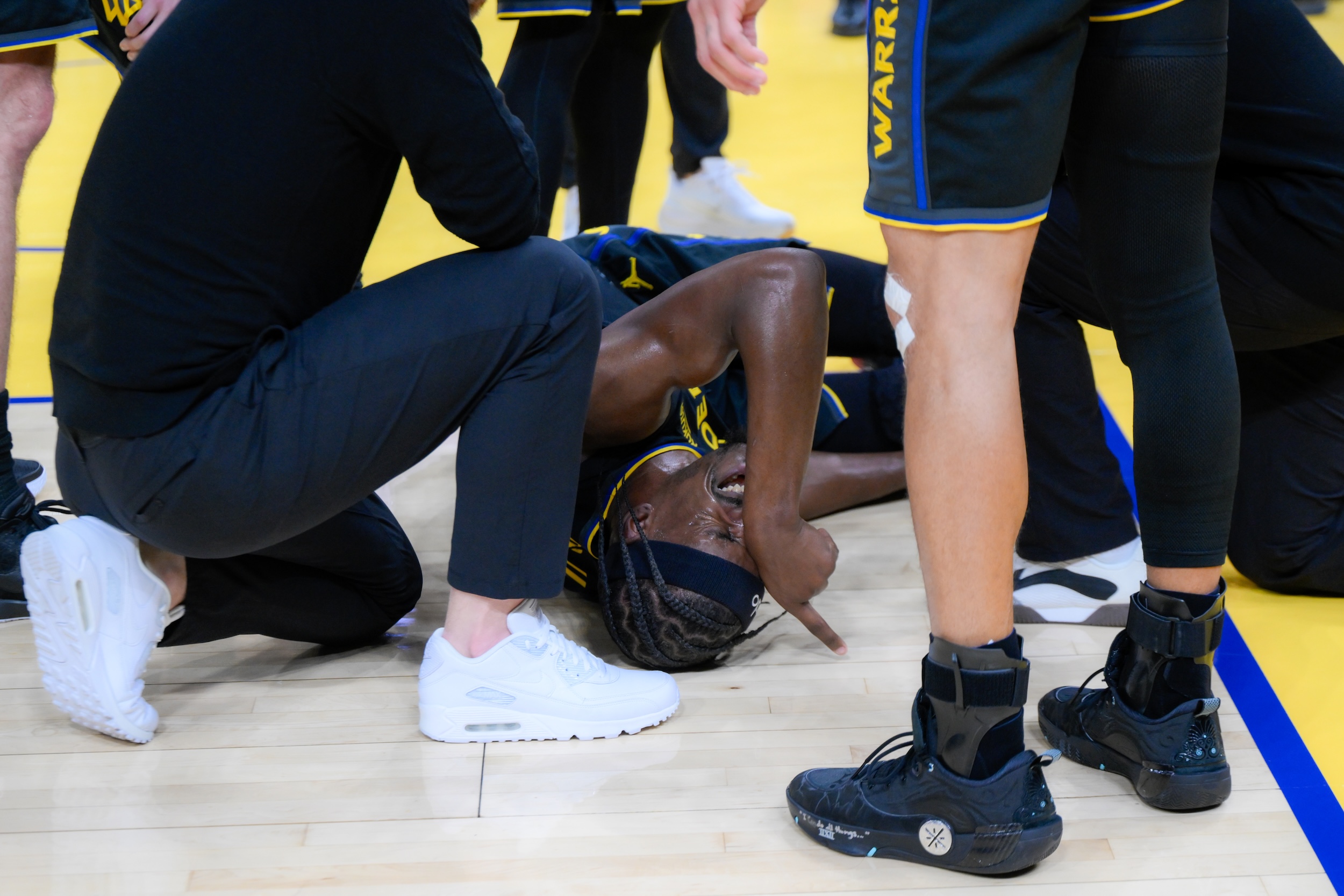I didn’t intend to become an adult gamer, but I guess you don’t buy a video game console to become a knitter (though I became that, too). In the pre-pandemic days of August 2019, I bought a Nintendo Switch to congratulate myself on finishing a first draft of my master’s thesis, thinking it could be fun to get back into gaming for the first time since I was a pre-teen. As someone who works in and writes criticism of the arts, I’ve found much narrative value and storytelling innovation in video games. I can artistically justify my time playing them without much struggle, and though I don’t believe in writer’s block in a literal sense, I’ve found playing video games to be emotionally cathartic when hitting a wall on a blank Google Docs page.
That said: A phenomenon that has occurred over the past year is me developing a little thing I call Gamer's Brain. This is different to me than a gaming addiction; it’s more of an adjusted, or gamified mode of thinking. To example: I spent the first year and a half of my adult gaming journey playing games as is. I didn’t look stuff up; I didn’t watch walk-throughs. I tried to get through stuff as best I could on my own, occasionally reaching out to a friend or more gaming-skilled roommate to help me get over the hump. Around January of this past year, I made the mistake of dipping into the world of guides and walk-throughs and the dreaded speed-running, which unlocked a part of my brain I didn’t know existed. Gaming, then, became not a thing I did for 45 minutes a day, but about optimizing. It became about stats and figures and builds. I maintained a healthy relationship with my time at the console, but an unhealthy relationship away from it—certain games (Hades) beginning to dominate my dreams.
When I’ve traveled here and there in the past few months, I’ve referred to the time as my “gamer’s rehab,” trying my best to shake the urge to consume gaming content while away. I guess this is what parents of teenagers worry about? Sorry, as always, to validate the concerns of parents of teenagers. I knew, however, I was going to be spending a month away from home on a writer’s residency at the end of the year, and this, I decided, would be the gaming detox that made the difference. This would be the one that rewired my brain to how it was previously, which was to say: spending off-hours googling diseases you can get in your 30s.
I flew Switch-less, PS5-less across the country; I deleted Two Dots and Solitaire from my phone. The only bit of leisure I toted along (besides reading) was a 1,000-piece puzzle I got at the Nintendo store a few weeks prior. If I couldn’t game game, then I could at least puzzle as a game. The trick with leisure in a writer’s residency is to do something you enjoy, that lets you turn your brain off, but that you can’t, under any circumstance, get addicted to. Easy, right?
For the first day or two, the puzzle sat in the corner of the room as a thing I attended to every few hours to weed out edge pieces and connect like-colored segments of the puzzle. I was going through it in a careful, lazy way. It was nice to spend just five or 10 minutes looking at the puzzle then moving on. And then my brain thought the terrible phrase: “jigsaw puzzle speedrun.”
As it turns out—and who, really, is surprised?—the internet is full of puzzle time lapses and speedruns, user guides and strategy walkthroughs. There were people out there who, like me, were doing puzzles about gaming. You may think you know how to solve a puzzle, but you don’t. You may think it’s all about edge pieces, but it’s really about shapes. You may think it impossible to dream you’re doing a jigsaw puzzle every night in a row for six nights, but I promise it is.
I finished the 1,000-piece puzzle quickly—an Animal Crossing-themed tableau. I moved through this puzzle quicker than any I’d done previously, and I don’t think it’s because the puzzle was necessarily easy, but because the longer I spent with it, the more my brain shifted into Gamer Brain and I began to think around the optimization of completion. You think it’s about color organizing but it’s really about shape, texture, and perspective. You start to see puzzle pieces beyond “green” and “blue,” but as “foreground” and “background.” You start to say things like, “I hate building this little girl's plaid bandana.”
Then I did another 500-piece puzzle—frogs. To go from doing a 1,000-piece puzzle to a 500-piece puzzle is like going from cooking dinner to microwaving leftovers. I was too efficient. Then I did another one, a medieval scene: watercolor-like in design with a much more impressionistic image. “This will be harder,” I thought to myself, but no, I was a genius, and the scene came together in a mere two and a half sittings. How lucky was I to be in a house of puzzles. I wrote all morning and I puzzled all night. It would get to be midnight—one more piece, OK, then one more piece. I googled: “how much money puzzle speedrunner” (no result), “jigsaw puzzle professional job” (confusing results), “jigsaw puzzle grad school” (no result).
And then—flying high towards the sun, wax wings intact—I hit my breaking point. I got to a 500-piece puzzle that I couldn’t solve. It was a photograph of an old house, one of those beautiful, wooden Victorian ones like you find all over the Great Lakes region. It started OK, and I got to the last leg, the final 20 percent, and left it. I was too frustrated, too worn out. I couldn’t sort by shape: They were all the same shape. I couldn’t sort by color: They were all variations on the same one. Perhaps the issue was that the photo itself wasn’t very good. Yes, this was the problem. The photography of the puzzle. The photo of the house was bad, therefore I couldn’t be blamed for my inability to solve the puzzle. I got the house done, but the trees—it’s always the trees!—foiled me. Perhaps this was the equivalent of throwing a controller on the floor. I gave my heart to the puzzles, and they bested me.
My puzzle brain burned bright and furious. Maybe I’ll return to the project that lost me, but maybe this was the temporary breaking point I needed. I have always considered Gamer Brain a temporary state of mind, but perhaps it’s something I carry with me regardless of whether I’m in front of a gaming platform or looking for shoes online. I guess it is easy to link this back to, dare I say, late capitalism, but the truth of the matter is that I have always liked having hobbies and I have always liked keeping busy and I have always liked having little tasks. I don’t go Gamer Brain with all of them—just the ones I feel capable of becoming outrageously and unenjoyably good at. Maybe that’s the secret, though, to not getting sucked into this form of thinking: It’s OK to just be OK at something.
My dreams have returned to normal (fantasies of long-lost friends getting married and only giant bugs show up at the wedding) and the itch to strategize and speedrun has diminished. I didn’t even optimize the writing of this blog: starting with the main points (the edges) and filling in as I go. I wrote it a normal way, slowly, stupidly, in fits and spurts, with details where I wanted them in in as much time as I needed, and then it was done.






